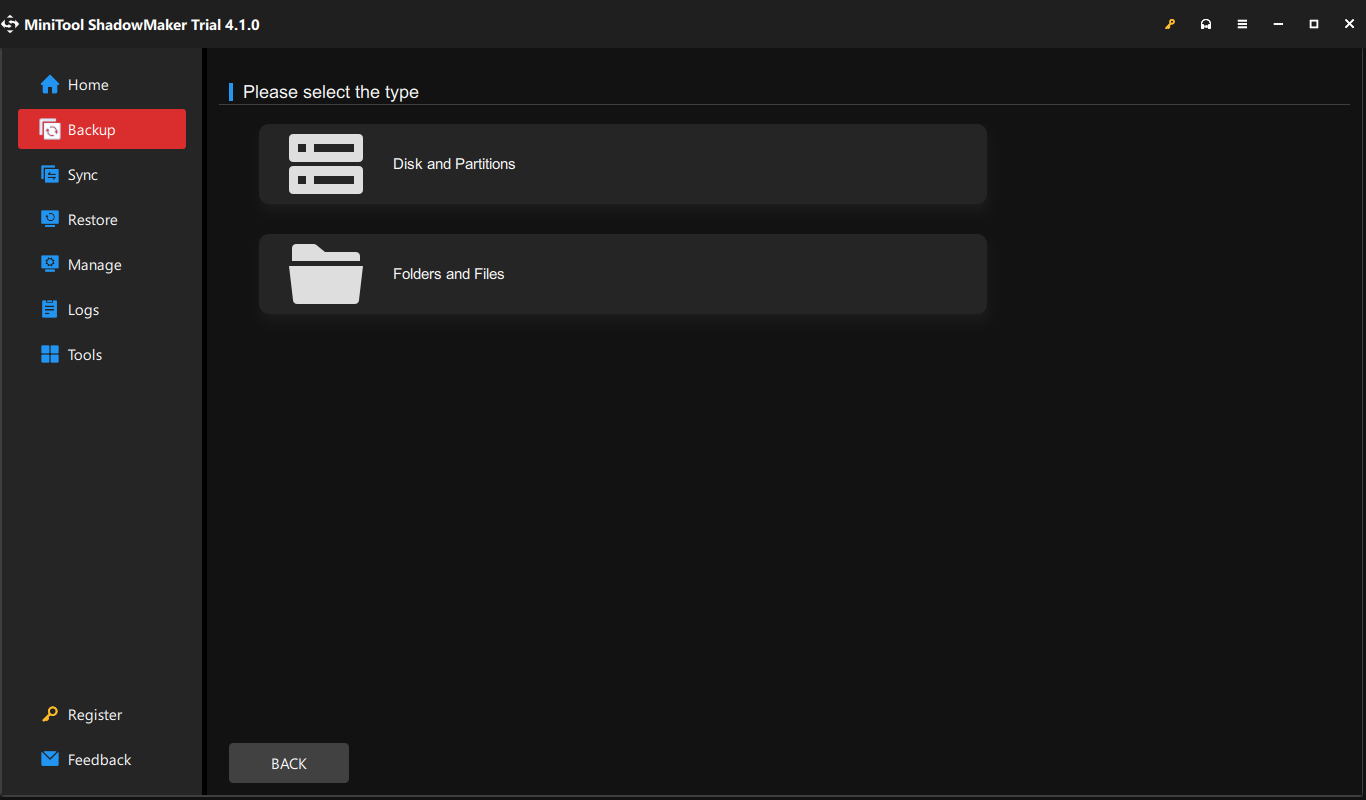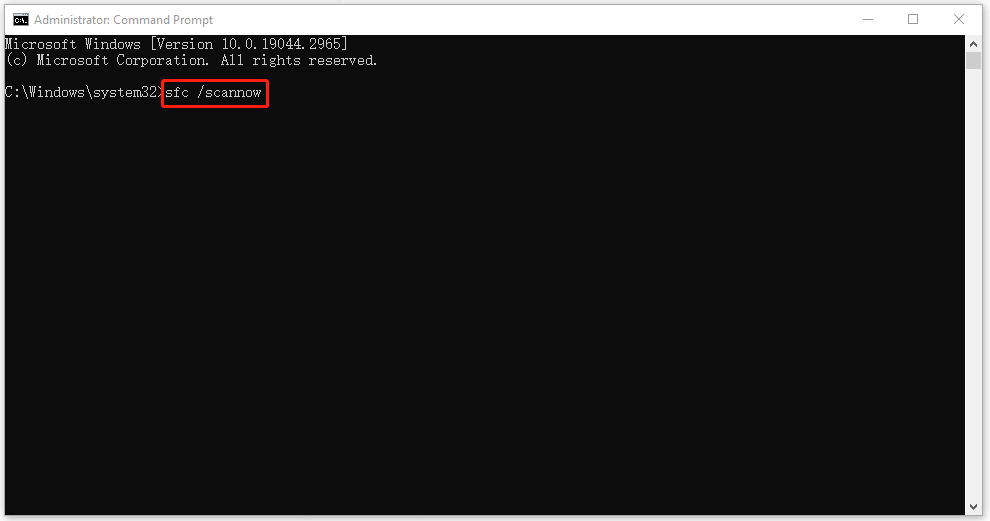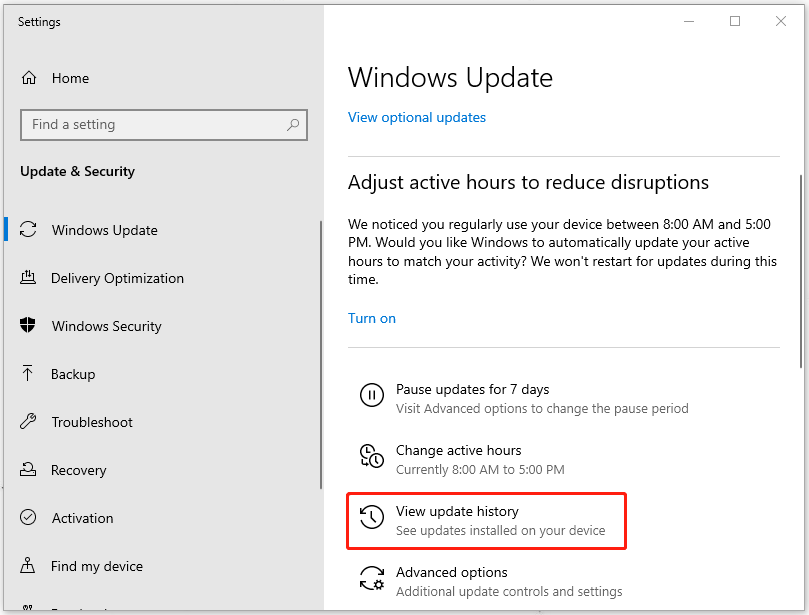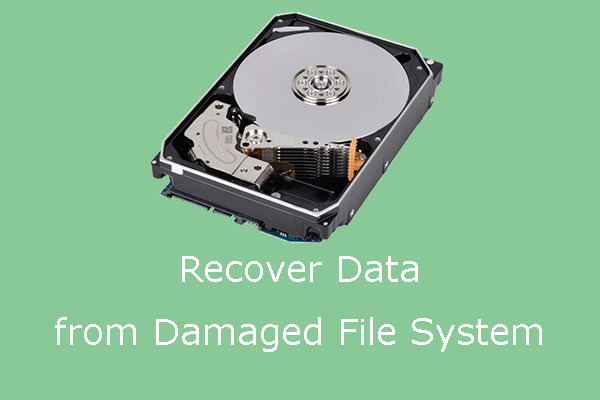Why Does the 0x800f8001 Error Happen?
What is the Windows update error code 0x800f8001? Why does this code happen? Some Windows users mentioned that the error code will jump out to stop their operations when they attempt to update Windows.
According to what the inflicted users reported, we have concluded some possible causes for you, such as damaged system files, hardware issues, poor Internet connection, etc.
The reasons are varied and targeting the error 0x800f8001, Microsoft might suffer from server issues, which requires you to wait for a while, maybe several hours or days.
Besides, this issue can happen on any Windows version, especially for the users who are participating in the Insider program. The update would simply not download or get stuck in the middle of the installation.
Your data could get lost when the Windows update fails. Because during the process, your data is transferred to the new version and the failure will stop it, which can make some data lost. Backing up your data before the Windows update is the best way to protect your data.
MiniTool ShadowMaker, free backup software, has many excellent functions and features, such as sync and disk clone. To improve the backup performance, it provides backup schemes and schedules. It is available for 30 days for free; go enjoy it!
MiniTool ShadowMaker TrialClick to Download100%Clean & Safe
Step 1: Double-click the installed program and click Keep Trial.
Step 2: Go to the Backup tab and choose the SOURCE section where you can choose systems, partitions & disks, folders & files as your backup source.

Step 3: Then click DESTINATION to choose the place where you want to back up to – User, Computer, Libraries, and Shared.

Step 4: After that, please click Back Up Now to perform the task immediately or Back Up Later to start it later. The delayed task will be displayed in the Manage tab.
Then, there are some available solutions that can help get rid of the 0x800f8001 error.
How to Fix the Error 0x800f8001?
Solution 1: Use Windows Update Troubleshooter
When you encountered the Windows error code, you can try the Windows update troubleshooter as your first step for troubleshooting. This tool can help resolve some common issues occurred on Windows Update.
Here are the steps to run the built-in tool.
Step 1: Go to Start > Settings > Update & Security > Troubleshoot.
Step 2: Click Additional troubleshooters from the right panel and click Windows update under Get up and running and then Run the troubleshooter.

When it finishes detecting problems, you can follow the suggestions shown on the screen to fix issues.
If this method can’t resolve your issue, you should try to reset the Windows Update components manually. To do that, please refer to this post: How to Reset Windows Update Components in Windows 11/10.
Solution 2: Use SFC and DISM Scans
Since some Windows update error is triggered by corrupted or missing system files, you can use dedicated repair tools to check and fix the system file corruption. Then, here is the way.
Step 1: Open Search by pressing Win + S and input Command Prompt in Search to run it as an administrator.
Step 2: When the window pops up, please type sfc /scannow and press Enter to execute the command.

The process will take some time and when it finishes, you can execute the next three commands one by one.
- DISM /Online /Cleanup-Image /CheckHealth
- DISM /Online /Cleanup-Image /ScanHealth
- DISM /Online /Cleanup-Image /RestoreHealth
After that, you can restart your computer to check if the issue has been resolved.
Solution 3: Reinstall the Recent Update
Another method is to uninstall and then reinstall the recent Windows update. But notice that before you start uninstalling the Windows update, please back up your important data first.
Some users reported that they lost their data after the Windows uninstallation, so you can use MiniTool ShadowMaker to protect your files before you start the next moves.
MiniTool ShadowMaker TrialClick to Download100%Clean & Safe
Then you can uninstall the update by following the steps.
Step 1: Go to Start > Settings > Update & Security > Windows Update.
Step 2: Click View update history from the right panel.

Step 3: On the next page, click Uninstall updates, and then you will see your installed updates in the pop-up interface; you can right-click the update you want to uninstall and click Uninstall to remove the update from your device.
Then when you have uninstalled the Windows update, to reinstall the latest Windows version, you can go to Windows update to check for updates. That will help you automatically download and install available Windows updates.
Or, you can download the latest available Windows version manually. Just go to the Microsoft Update Catalog site and search for the wanted Windows version. It will display all the related files and you can choose the suitable one to download.
Bottom Line:
Windows update issues are quite commonly happening to users and the solutions can be applied in most cases. If you have encountered the 0x800f8001 error, the above methods can be helpful.
In addition, if you have any better solution to solve this issue, you can share it in the comment zone. And if you have any problem with the MiniTool ShadowMaker, you can contact us via email at [email protected].


![[Full Guide] How to Fix Windows Update Troubleshooter Not Working](https://images.minitool.com/minitool.com/images/uploads/2023/03/windows-update-troubleshooter-not-working-thumbnail.png)

User Comments :